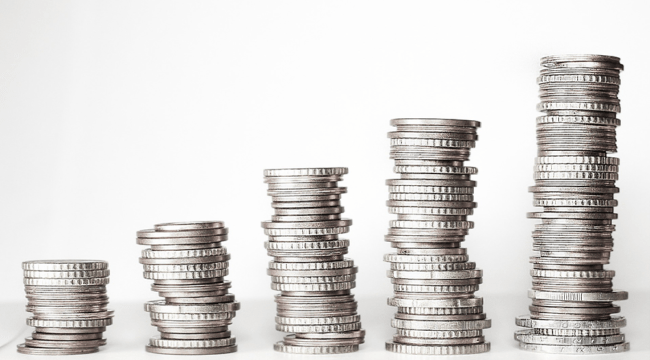The Money of Kingdoms and Empires
While gold gets most of the headlines (for good reason), silver is often ignored. Silver is sometimes referred to as “poor man’s gold.” But it shouldn’t be ignored. Silver has a long history as a monetary metal. It also has many industrial applications that make it valuable.
Today, we’re going to take an in-depth look at this important metal.
The Roman Republic and the later Roman Empire minted a popular silver coin called the denarius. One denarius was the daily wage for unskilled labor and Roman soldiers.
Of course, in the late Empire, it was debased by mixing the silver with base metals. The decline of the Roman Empire went hand in hand with the decline of sound money.
Silver was also an important monetary metal in China, adopted to end hyperinflation caused by overissuance of paper money.
In the early ninth century AD, Charlemagne greatly expanded silver coinage to compensate for a shortage of gold. This was successful in stimulating the economy of the predecessor of the Holy Roman Empire.
In a sense, Charlemagne was the inventor of quantitative easing over 1,000 years ago. Silver was his preferred form of money.
Under the U.S. Coinage Act of 1792, both gold and silver coins were legal tender in the U.S. From 1794 to 1935, the U.S. Mint issued “silver dollars” in various designs. These were widely circulated and used as money by everyday Americans. The American dollar was legally defined as one ounce of silver.
The American silver dollar of the late eighteenth century was a copy of the earlier Spanish Real de a Ocho minted by the Spanish Empire beginning in the late sixteenth century. It became a benchmark for the U.S. monetary system long before a gold standard was formalized in the U.S.
The English name for the Spanish coin was the “piece of eight,” (ocho is the Spanish word for “eight”) because the coin could easily be divided into one-eighth pieces.
Until 2001 stock prices on the New York Stock Exchange were quoted in eighths and sixteenths based on the original Spanish silver coin and its one-eight sections.
Until 1935 U.S. silver coins were 90% pure silver with 10% copper alloy added for durability. After the U.S. Coinage Act of 1965, the silver content of half-dollars, quarters and dimes was reduced from 90% to 40% due to rising price of silver and hoarding by citizens who prized the valuable silver content of the older coins.
The new law signed by President Johnson in 1965 marked the end of true silver coinage by the U.S. Other legislation in 1968 ended the redeemability of old “silver certificates” (paper Treasury notes) for silver bullion.
Thereafter, U.S. coinage consisted of base metals and paper money that was not convertible into silver; (gold convertibility had already ended in 1933).
In 1986, the U.S. reintroduced silver coinage with a .999 pure silver one-ounce coin called the American Silver Eagle. However, this is not legal tender, although it does carry a “one dollar” face value. The silver eagle is a bullion coin prized by investors and collectors for its silver content. But it is not money.
Who in their right mind would pay a full ounce of silver for goods or services worth only a buck?
In short, silver is as much a monetary metal as gold is and has just as good a pedigree when it comes to usage as a coin. Silver has supported the economies of empires, kingdoms and nation states throughout history.
It should come as no surprise that percentage increases and decreases in silver and gold prices denominated in dollars are closely correlated.
But below, I show you why gold and silver prices sometimes diverge and several reasons why silver should shine this year. Read on.
Regards,
Jim Rickards
for The Daily Reckoning



Comments: